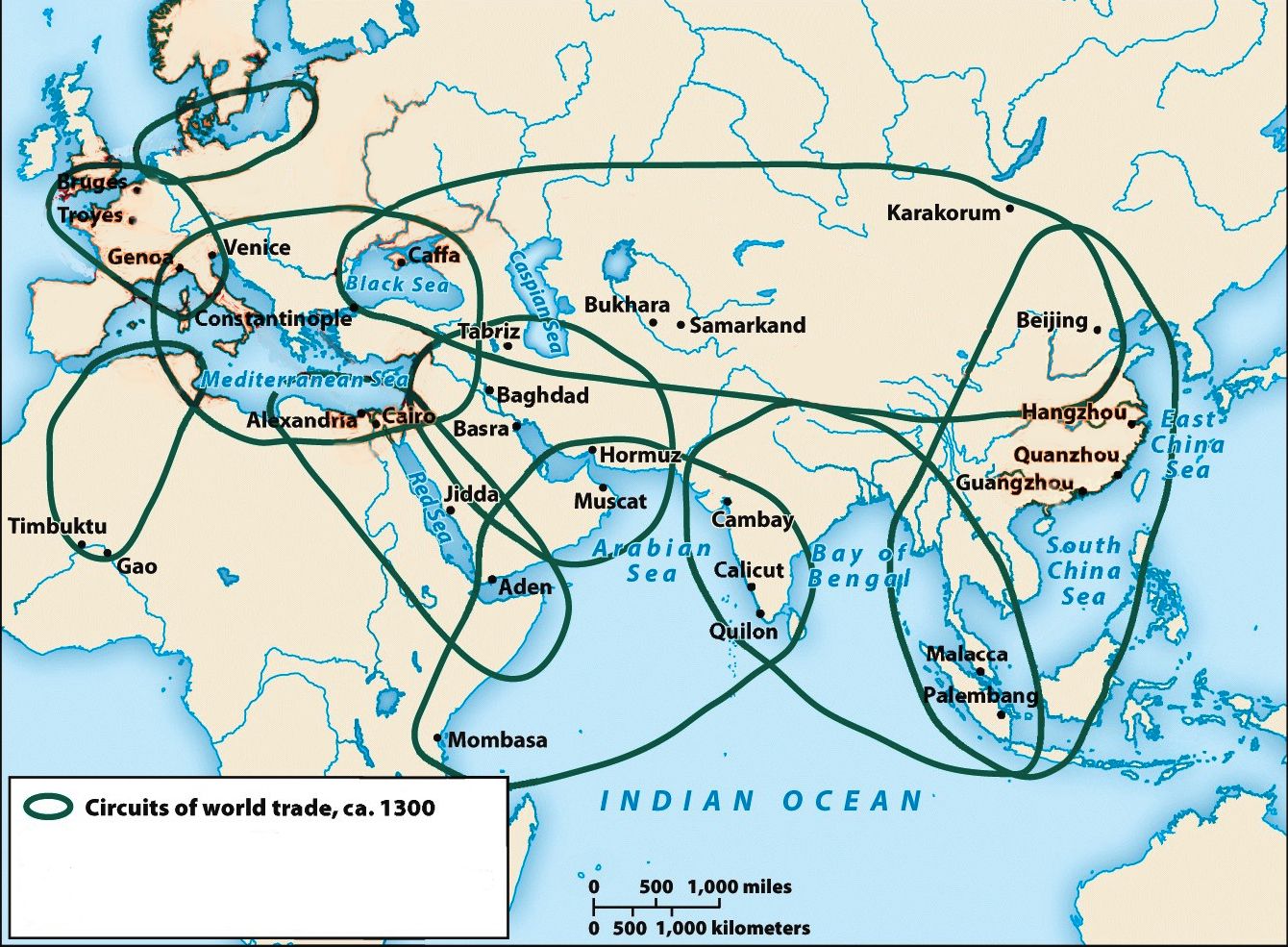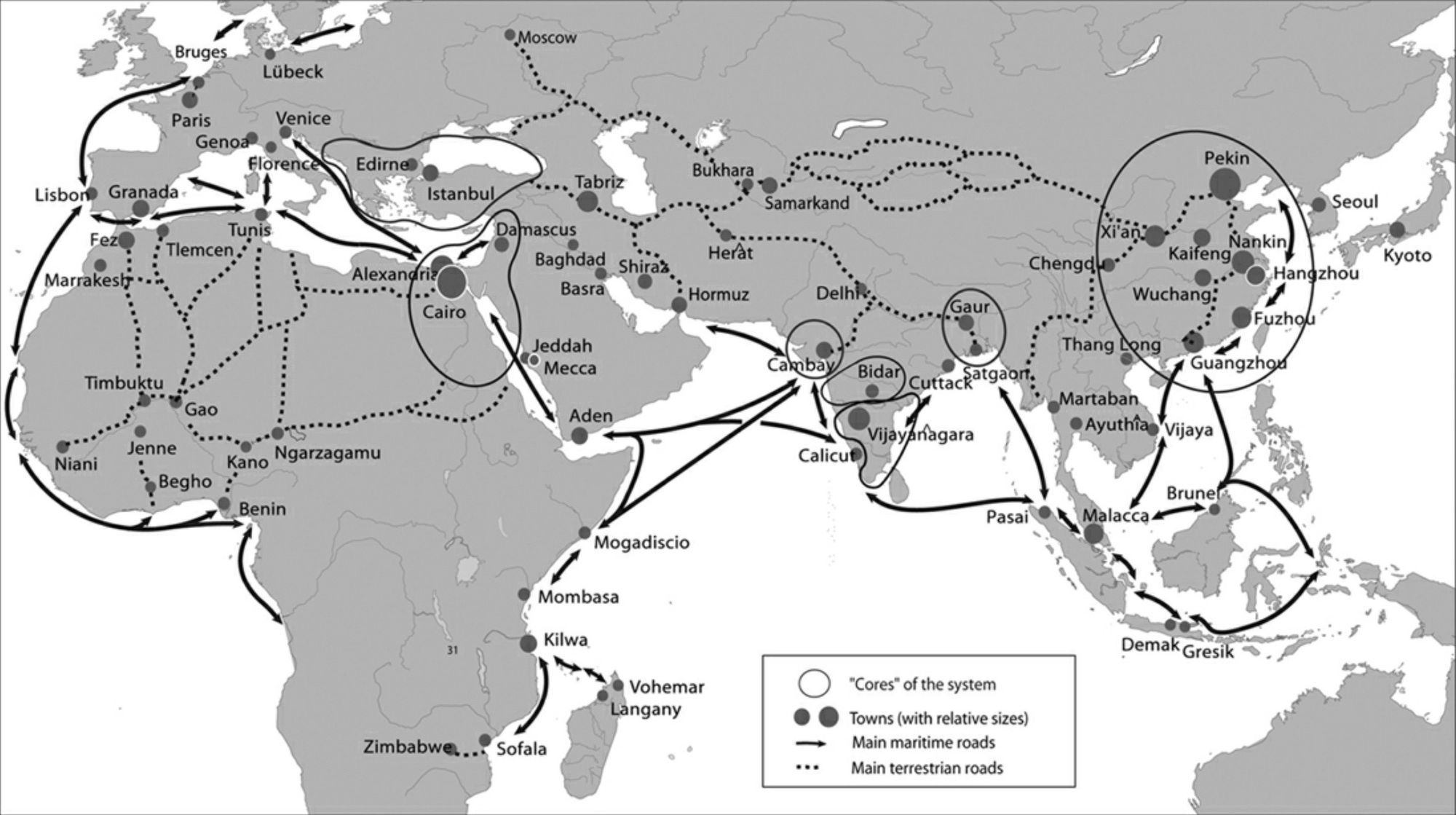Don’t Call It a Comeback: Afroeurasian Revivals in the Fifteenth Century

Table of Contents
Don’t call it a comeback
I’ve been here for years
I’m rocking my peers
Puttin’ suckers in fear
Makin’ the tears rain down like a monsoon
Listen to the bass go boom
Explosions, overpowerin’
Over the competition I’m towerin’
Wrecking shop when I drop these lyrics
That’ll make you call the cops
Don’t you dare stare, you better move
Don’t ever compare
Me to the rest that’ll all get sliced and diced
Competition’s payin’ the price
– LL Cool J “Mamma Said Knock You Out”
I thought I was just being witty with the title, and then I realized that the first verse of LL Cool J’s classic was the perfect setup for thinking about Afroeurasia in the fifteenth century with his mention of the monsoon. It may be a stretch, but we need to find ways to make this world history stuff interesting for fifteen-year-olds (or forty-something teachers thinking they’re still hip).
Many years ago I got frustrated with AP World History teachers on the old listserv complaining about the Renaissance not being included in the AP World History curriculum. In response, I developed a lesson based on Hans Holbein’s The Ambassadorspainting which explored the non-European elements in the painting (I’ll be talking about this painting more in the next post.) I then expanded on this lesson in an earlier post on Globalizing the Renaissance. I’ve realized that while this topic is important, it helps to understand the context in which I usually teach it. Given that many teachers will begin the new AP World History courses around 1400, it seems like talking about my framing of the fifteenth century is a good starting post for thinking about how we decolonize world history.
I teach in 70-minute blocks that meet two or three times per week. I cover the fifteenth century over three days. The students have already spent time reviewing what they’ve learned about Afroeurasia in their previous world history course, being introduced to the concept of the thirteenth-century world system, the Mongols, the Black Death, and the onset of the Little Ice Age. In short, they understand the thirteenth century as a sort of high point of Afroeurasian integration and the fourteenth century as one of disruption to many existing patterns of exchange. We also keep referring back to this updated map of the thirteenth-century world system that appears in Strayer’s Way of the World.

For the first two days of our discussion, we rely heavily on Carter and Warren’s Forging the Modern World and Marks’ The Origins of the Modern World (the two main books in my class) as well as an excerpt about Portuguese Prince Henry’s motives from Gomes Eanes de Zurara’s The Chronicle of the Discovery and Conquest of Guinea. We talk about the beginning of the Ming Dynasty, the voyages of Zheng He, the role and function of the Indian Ocean, the Delhi Sultanate, Timur’s Empire, the beginning of the Ottoman Empire, West Africa, East Africa, slavery in Afroeurasia, and Europe’s revival. I know it seems like a lot, but these two books treat these topics concisely and do a great job of placing all these issues in the framework of a revival of states and trade in Afroeurasia in the fifteenth century. I also make use of this map from Philippe Beaujard’s “The Indian Ocean in Eurasian and African World-Systems before the Sixteenth Century”.

As we work our way through these different regions of Afroeurasia, students keep comparing the two world system maps to see what is changing and what is staying the same.
By the end of the two days, students hopefully have come to understand how many different parts of Afroeurasia were rebounding politically and economically after the multiple disruptions of the fourteenth century. Students also are able to see how Portugal’s maritime expansion into the Atlantic Ocean was part of a larger European desire to gain access to the many products produced and grown in other parts of Afroeurasia. Instead of framing Europe’s fifteenth-century revival and Portugal’s project of maritime expansion as something new or unique (as too often happens in history courses that take 1450 or 1500 as a starting point), the narrative is flipped into one in which Afroeurasia revolves around the Indian Ocean and Europeans are on the periphery.
In the next post, I’ll talk about the Renaissance and where it fits in the fifteenth century.
Liberating Narratives Newsletter
Join the newsletter to receive the latest updates in your inbox.



